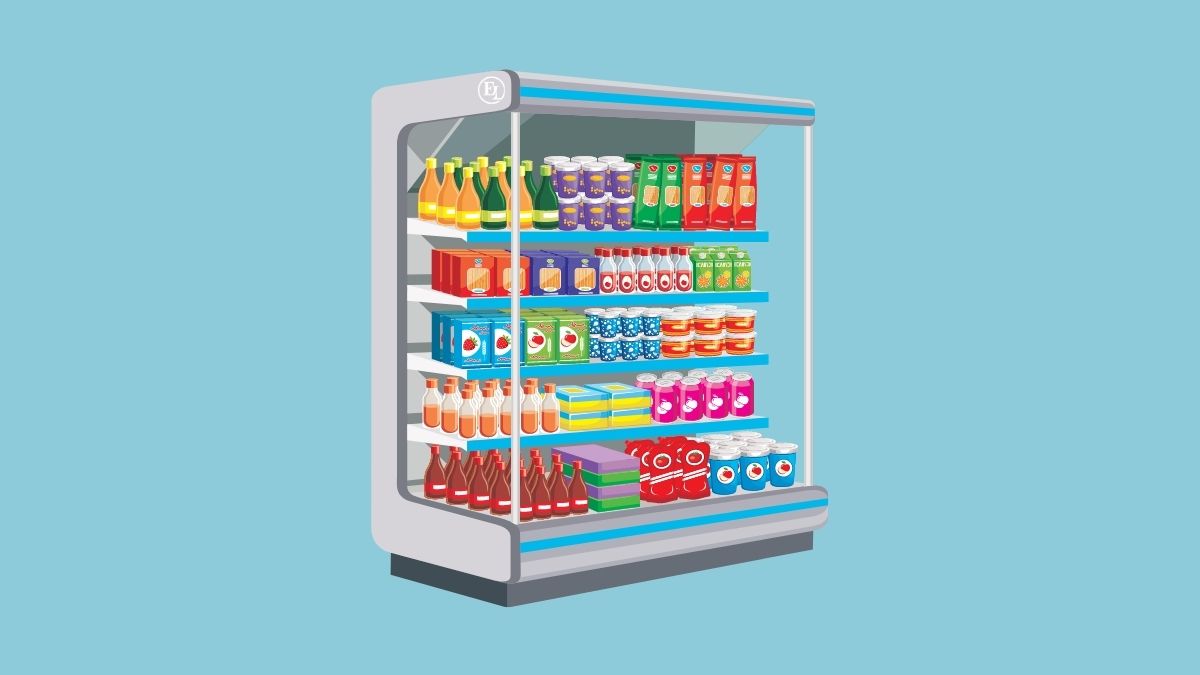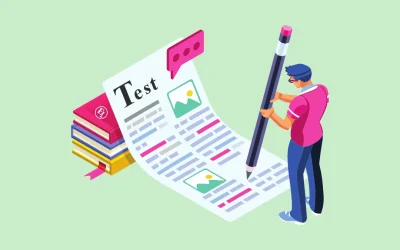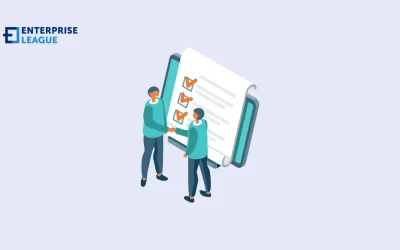So how to approach retail stores to sell your product? Is there some secret recipe? Let’s find out.
1. Identify your target market
2. Make contact with local buyers
3. Make a name for yourself at Trade Shows
4. Use social media to your advantage
5. Pitch your product in person
6. Create a Sales and Marketing strategy
7. Four steps to follow
8. Show them analytical data
9. Show your product’s trajectory
10. Partner up with other brands
11. Try a number of approaches
12. Conclusion
How to approach retail stores to sell your product?
When we asked how to get your product in stores we wanted it to get answered by brands that have been through the process and understand it from beginning to end. So you’ll find that the following approaches on how to get a product in stores have already been tried, and more importantly, proven effective.
Create retail-ready packaging
One often overlooked aspect of getting your product in stores is having retail-ready packaging from day one. When we approached our first major retailer, they were impressed not by our pitch but by our shelf-optimized packaging design. We’d invested early in professional packaging that included proper barcodes, clear product information, and eye-catching visual elements that would stand out on crowded shelves.
The buyer actually told us they rejected three similar products that week because the packaging wasn’t retail-compliant or would require special fixtures. We also created counter displays that took up minimal space but maximized visibility, making it easier for store managers to say yes without reorganizing their existing layout. This attention to retail practicalities got us into 27 stores in our first year, even though our marketing budget was tiny compared to established brands.
David Chen, CEO of PackRight Solutions
Identify your target market
The best way to get your product in stores is to select a distributor that will assist you in getting to market as soon as possible. Another important element to consider when it comes to your product is story mapping, as it helps with product release plans.Make sure the distributor you select sells to your exact target market, and that they know how to deliver goods to that market and how to get your product in stores.
Finding out who distributes your competitors’ goods or who offers complementary products to yours is one idea. When I say competitors, I’m referring to companies that sell a lot of products. Finding a distributor who represents similar and popular products can help you bring your product to market quicker because they are already familiar with the market and how to compete and win. It also gives the retailer a great promotional opportunity by allowing them to build packages and add-on offers for several items, thus increasing the revenue potential of the product.
Alex Thompson, Director at Festoon House
Make contact with local buyers
Headbands of Hope got into the first few stores because I walked in with headbands and demanded to talk with the customer. I was so sure they’d sell that I gave stores a consignment deal to try them out (producing payment for me only when the products sold).
You may also offer consignment if you want to get your foot in the door. However, in my personal experience, as my business expanded, it became more difficult to track down orders and checks on a consignment basis, so we now only do orders.
Please find Dusan’s details below for credit as required and thank you for your time.
Dusan Stanar, Founder and CEO of VSS Monitoring
Make a name for yourself at Trade Shows
Trade shows may be the perfect answer to your question about how to get your product in stores. They have the potential to be your golden ticket. That’s because retailers attend trade shows in droves, constantly on the lookout for what’s new and next. However, you should pick your shows carefully because they can be a significant time and financial commitment.
To reap the profits, you must be completely committed.
Your booth doesn’t have to be bright yellow, but you don’t want to just hang a couple of signs or people would walk right by them. You think of the same concepts that designers use in department store window displays that are built to make customers pause and look.
In reality, if you have the funds, hiring a professional booth production company can be a wise decision.
Collin Matthews, CEO and Founder of Cookwared
Use social media to your advantage
While most people think of social media as a way to generate buzz among customers, it can also be used to attract wholesale buyers.
My plan was to use Instagram to develop a following of outdoor and niche-related influencers. In exchange for a free product, those influencers posted pictures of my products and wrote about them.
We had a chain retailer from Alaska with six locations reach out to us and put an order for 150 items on the spot within the first few weeks of posting on Instagram. Without ever having actually seen one in person.
As a result, we decided to stop selling solely online and instead approach smaller chains and individual boutiques around the country to get the items on store shelves.
Julien Raby, CEO and Founder of Thermogears
Pitch your product in person
Bram Jansen, Chief Editor of vpnAlert
Create a Sales and Marketing strategy
Distributors would be interested in learning how you want to sell to retailers and customers. And, at the end of the day, getting people to buy your stuff is your responsibility. Ultimately, the supplier is in charge of generating retailer and customer demand.
Make use of all available marketing resources to help boost demand and ensure that retailers continue to place orders with your distributor. The most profitable items for your retailer and supplier are the ones that move and are replenished repeatedly.
Sylvia Manman Kang, CEO of Mira
Four steps to follow
Want to know how to approach retail stores to sell your product? Follow these steps:
- Research to see if they will be interested. An organic store won’t carry a regular shampoo.
- You should always have a pitch. A pitch that shows them how much they’re missing out if they don’t carry your product.
- Make sure you have the necessary sales numbers to support your pitch. Nothing impresses more than statistics that prove your product is selling.
- Locate their decision-maker in LinkedIn and go straight for them. A personal buyer-supplier relationship you’re building will help you a lot in getting the deal more favorable.
Luat Duong, Search Engine Optimization Lead at Scandinavian Biolabs
Show them analytical data
When going to pitch your product to a store it is best to show them pure analytical data. Present them what demographic tends to purchase your product, how has the growth of your product looked over the past year and how your competitors do in stores. If you are able to showcase great numbers for all of these it makes it extremely difficult to reject your offer.
Ryan Salomon is the CEO of Kissmetrics
Show your product’s trajectory
When presenting your product to a retail store, it is best to mark out your product’s trajectory in the given area. Show how your product has boded online and where the sales have come from. If you are more so centered locally, show them that you have a loyal following in the area that can make a splash in a retail store. Create hype on your social media platforms that show the retailer that people are genuinely excited to get their hands on your product in person.
Carrie Derocher, CMO at TextSanity
Partner up with other brands
We are a small batch handcrafted uniquely flavored toffee maker on Amelia Island Florida. Based on my grandmother’s recipe we took tradition and added a creative twist. There are many local toffee makers and even though we offer different flavors we knew we had to also approach the market place in a special way.
I decided partnerships were the best way to leverage our brand awareness and gain a greater presence. So we partnered with an up and coming distillery making a bourbon toffee. This exciting combination of ingredients and flavors landed us on the shelves of Whole Foods and Total Wines.
We continue to push the envelope and have partnered with The Ritz Carlton making custom flavors (ghost pepper salt and grand marnier is one example of our specialty flavors) for their events and guests. Creative, unique, special is what puts Amelia Toffee on shelves.
Anita Comisky, Founder of Amelia Toffee Company, LLC
Try a number of approaches
My best advice on how to get a product in stores would be to try a number of approaches – remember buyers are people too, there’s no one single best way to approach them.
Due to Covid many trade shows have moved online which is great – I’ve been approached by a number of buyers through virtual trade shows this year. Virtual events are much easier and more cost-effective for small businesses compared to traditional in-person events.
Some stores have discovered my brand through social media – so having a well planned out, attractive social media feed is always important.
I’ve also had some success “stalking” buyers on LinkedIn – it can’t hurt to send a few buyers from stores you’re interested in an invitation to connect!
I also believe it’s important not to just contact any store – make sure your brand offering is a great fit with the store you’re pitching to.
Ally Mahoney, Owner of Sunny Active
Conclusion
Knowing how to approach retail stores to sell your product is a skill you must master if you want your business to succeed and grow. Creating a good product and expecting to sell on its own is a fairytale. You have to craft a plan on how to get a product in stores. Hopefully, some of the examples above helped you gain insights into what works when it comes to getting your product in stores.
More must-read stories from Enterprise League:
- What it takes to start a successful wholesale business.
- A step-by-step guide to teach you how to write a business essay.
- Modern B2B payment solutions that will transform your business.
- A few tricks up your sleeve when dealing with a stubborn client who refuses to pay.
Related Articles
SEO writing: Five foolproof tips to secure you the first page
When it comes to SEO writing it’s more guessing and less evidence about what works and what doesn’t. Luckily, we know what can really help you reach the first page.
How to onboard a new employee: Tips for quick integration
Your guide to smoother employee onboarding where you will find practical strategies that help new hires feel welcome and become productive team members faster.
6 tips on how to delegate work so it actually gets done
Delegation doesn’t have to be difficult, that’s why we are sharing some proven tips to delegate work effectively and get better results from your team.
SEO writing: Five foolproof tips to secure you the first page
When it comes to SEO writing it’s more guessing and less evidence about what works and what doesn’t. Luckily, we know what can really help you reach the first page.
How to onboard a new employee: Tips for quick integration
Your guide to smoother employee onboarding where you will find practical strategies that help new hires feel welcome and become productive team members faster.






